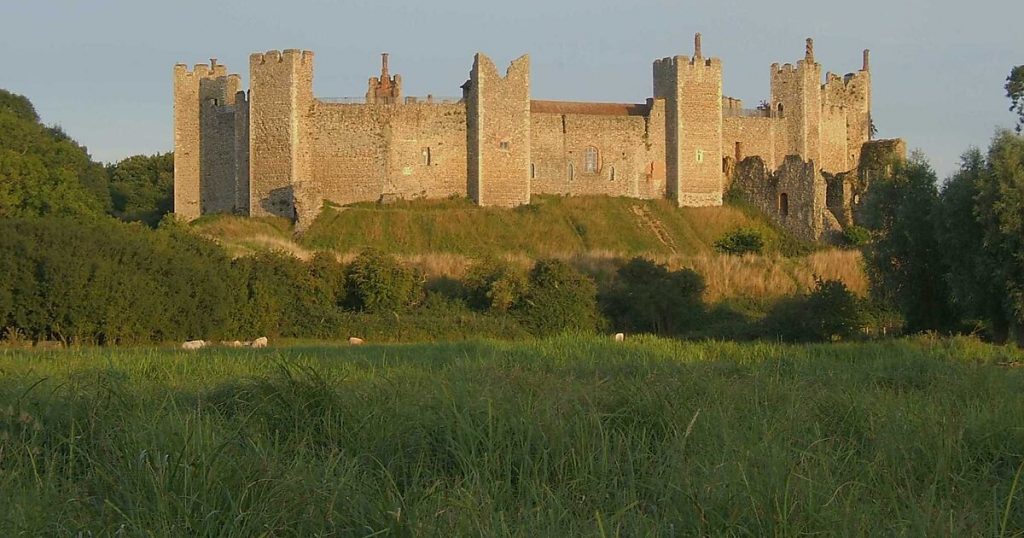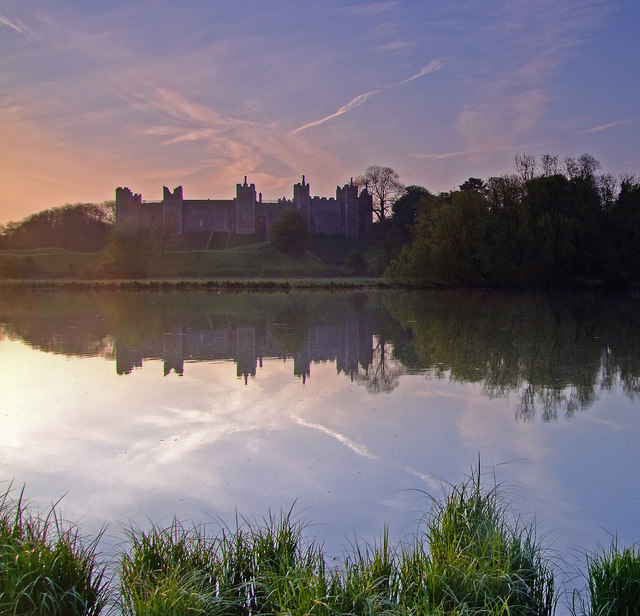Framlingham Castle
Framlingham Castle is a historically valuable castle in the market town of Framlingham in Suffolk, England. Like many other buildings in Suffolk, the main wall of the castle is clad in flint. The peculiarity of the castle is that it does not have a donjon or a central fortress, which is not typical for castles of that time. Instead, there is a well-fortified partition wall, protected by several towers, which are surrounded by residential buildings.

History
The castle was supposedly founded by King Redwald, who reigned between 599 and 624. Then the castle belonged to Edmund – one of the Saxon monarchs of East Anglia. Later, for 50 years, the castle belonged to the Danes, who subjugated the Saxons. William I the Conqueror and his son William the Red held the castle, but Henry I gave it to Roger Bigot, 2nd Earl of Norfolk. The castle became the seat of the Earls (and later Dukes) of Norfolk. After the suppression of the Bigo family, the castle passed to Edward I. Edward II transferred the castle to his half-brother Thomas Plantagenet, Earl of Norfolk. Several centuries later, the castle became one of the most famous residences of Mary Tudor Passed to Parliament in 1913, now managed by English Heritage
Framlingham Castle is located in the borough of the same name in Suffolk, England.
It was originally a Norman castle with or without a barrow, built in 1148 on the site of Framlingham, but it was destroyed by Henry II of England after the 1173–1174 rebellion.
Roger Bigot, at the time the Earl of Norfolk, built another to replace it, but its structure was unusual for the time: instead of the traditional keep, there was a curtain in the middle connecting the thirteen wall towers that were used to protect the central part of the castle. But despite this, King John of England managed to take the castle in 1216 after a short siege. At the end of the 13th century Framlingham Castle became a luxurious place, surrounded by a large park in which we brought many deer from there then making hunting parties.
In the 15th and 16th centuries Framlingham Castle was at the center of properties held by powerful families from Montbray and Howard. Two artificial lakes were built around the castle, which itself was expanded in brick, a very chic material for the time. To meet the needs of these large and wealthy families, the castle sourced food from all over England and luxuries from international markets.
Extensive entertainment gardens have been built inside the castle, and old parts have been redesigned to allow visitors to enjoy new views. However, at the end of the 16th century, the castle fell into disrepair and as a result of the financial difficulties experienced by Theophilus, the last owner of the Howard dynasty, it was sold, as were the various estates around.

In 1636 a benevolent gesture was made which resulted in the donation of Framlingham Castle to Pembroke College. As a result, the interior buildings were demolished so that the house of the god could be built on the site. The castle was used for these purposes until the closure of this structure in 1839; It later served as a military training site and a county court (in). In 1913, Pembroke College was taken over by the police (c).
During World War II, Framlingham Castle was used by the British Army as one of the regional defenses against a possible German invasion. Today it is Grade I listed. It is owned by English Heritage who manage it as a tourist attraction.
